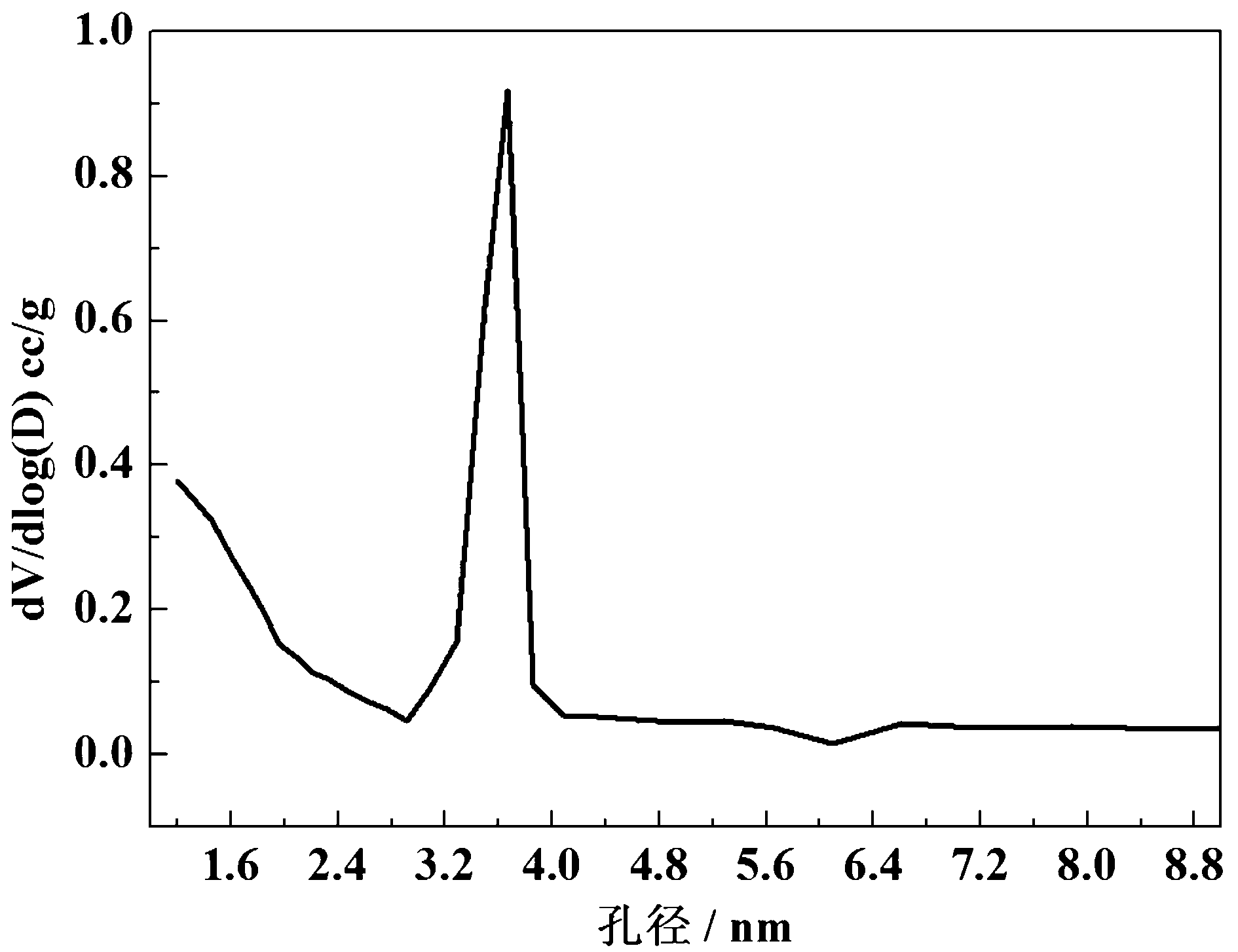Preparation of nitrogen-containing carbon material and application thereof as oxygen-reduction electrocatalyst in fuel cell
A technology of carbon materials and high nitrogen content, applied in the direction of physical/chemical process catalysts, battery electrodes, circuits, etc., can solve the problems of high production costs, restrictions on practical application commercialization, etc., and achieve industrialization and stability Good, cost reduction effect
- Summary
- Abstract
- Description
- Claims
- Application Information
AI Technical Summary
Problems solved by technology
Method used
Image
Examples
Embodiment 1
[0038] (1) Dried soybeans, crushed them, and milled them in a ball mill for 4-6 hours to obtain soybean powder;
[0039] (2) In a 100 ml flask, add 30 ml of absolute ethanol, then add 90 g of soybean flour and 10 g of ferric chloride, stir and mix evenly; place in an ultrasonic disperser for ultrasonic dispersion for 10 min, and stir for 10 min; Then place it in a blast oven at 80°C to evaporate the solvent and dry to obtain a mixed solid powder;
[0040](3) Mill the mixed solid powder in a zirconia ball mill tank for 4 h (the exchange operation interval is 1 h); 2 Carbonize under protection for 1 h to obtain primary carbonized material;
[0041] (4) After the primary carbonized material was milled in a zirconia ball mill tank for 4 hours (the exchange interval was 1 hour), it was fully dispersed in 30 ml of acetone, and refluxed at 60°C for 2 hours to clean the residual organic matter during the carbonization process; After suction filtration and water washing, use a mixed ...
Embodiment 2
[0045] (1) Dried soybeans, crushed them, and milled them in a ball mill for 4-6 hours to obtain soybean powder;
[0046] (2) In a 100 ml flask, add 30 ml of absolute ethanol, then add 99 g of soybean powder and 1 g of nickel chloride, stir and mix evenly; place in an ultrasonic disperser for ultrasonic dispersion for 10 min, and stir for 10 min; Then place it in a blast oven at 80°C to evaporate the solvent and dry to obtain a mixed solid powder;
[0047] (3) Mill the mixed solid powder in a zirconia ball mill tank for 3 h (the exchange operation interval is 1 h); 2 Carbonize under protection for 2 h to obtain primary carbonized material;
[0048] (4) After the primary carbonized material was ball-milled in a zirconia ball mill tank for 3 h (the exchange operation interval was 1 h), it was fully dispersed in 30 ml of acetone, and refluxed at 60 ° C for 2 h to clean the residual organic matter during the carbonization process; After suction filtration and water washing, use a...
Embodiment 3
[0052] (1) Dried soybeans, crushed them, and milled them in a ball mill for 4-6 hours to obtain soybean powder;
[0053] (2) In a 100 ml flask, add 30 ml of absolute ethanol, then add 9.5 g of soybean powder and 0.5 g of cobalt chloride, stir and mix evenly; place in an ultrasonic disperser for ultrasonic dispersion for 10 min, and stir for 10 min; Then place it in a blast oven at 80°C to evaporate the solvent and dry to obtain a mixed solid powder;
[0054] (3) Mill the mixed solid powder in a zirconia ball mill tank for 5 h (the exchange operation interval is 1 h); 2 Carbonize under protection for 2 h to obtain primary carbonized material;
[0055] (4) After the primary carbonized material was milled in a zirconia ball mill tank for 5 h (the exchange operation interval was 1 h), it was fully dispersed in 30 ml of acetone, and refluxed at 60 ° C for 4 h to clean the residual organic matter during the carbonization process; After suction filtration and water washing, use a m...
PUM
 Login to View More
Login to View More Abstract
Description
Claims
Application Information
 Login to View More
Login to View More - R&D Engineer
- R&D Manager
- IP Professional
- Industry Leading Data Capabilities
- Powerful AI technology
- Patent DNA Extraction
Browse by: Latest US Patents, China's latest patents, Technical Efficacy Thesaurus, Application Domain, Technology Topic, Popular Technical Reports.
© 2024 PatSnap. All rights reserved.Legal|Privacy policy|Modern Slavery Act Transparency Statement|Sitemap|About US| Contact US: help@patsnap.com










